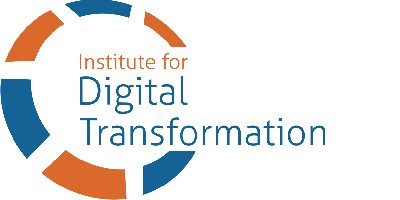“You won’t be replaced by AI, you’ll be replaced by someone who knows how to use AI.” – Harvard Business Review
Thinking like an artificial intelligence (AI) involves adopting a mindset that is systematic, data-driven, and often rooted in probabilistic reasoning. At its core, AI thinking requires a methodical approach to processing information, making decisions, and predicting outcomes. By understanding how AI systems operate, individuals can enhance their decision-making skills and adopt a more analytical perspective on problem-solving.
A key aspect of thinking like an AI is understanding probabilistic thinking. Unlike deterministic approaches that assume certainty, probabilistic thinking embraces uncertainty and models it mathematically. AI systems frequently deal with incomplete or ambiguous data, requiring them to calculate the likelihood of various outcomes rather than assuming one definitive answer. For instance, when a self-driving car approaches a crosswalk, it must decide whether a pedestrian will step into the street. It cannot be certain, but it can use historical data, environmental cues, and real-time observations to estimate the probability of that action. This probabilistic assessment helps the AI to make safer and more informed decisions, balancing the risks of different maneuvers.
Probabilistic thinking is not just about calculating the odds; it’s about understanding the distribution of possible outcomes and preparing for them. In medical diagnostics, for example, AI systems use probabilistic models to assess the likelihood of various diseases based on symptoms and patient history. These systems don’t offer absolute diagnoses; instead, they provide probabilities for a range of possible conditions. This approach mirrors how expert physicians think, weighing the probability of various diagnoses before deciding on further tests or treatments. By leveraging probabilistic thinking, AI systems can assist doctors in making more accurate and timely medical decisions, ultimately improving patient outcomes.
Moreover, probabilistic thinking extends to learning from data. AI systems often use techniques like Bayesian inference, which updates the probability estimate for a hypothesis as more evidence becomes available. This method is analogous to how humans learn and adapt their beliefs based on new information. For example, an AI tasked with predicting customer behavior in an e-commerce setting may start with certain assumptions about purchasing patterns. As it gathers more data on user interactions, browsing habits, and transaction history, it continuously updates its predictions. This adaptive learning process, guided by probabilistic reasoning, allows the AI to become increasingly accurate over time.
Another significant aspect of thinking like an AI involves pattern recognition and the ability to process vast amounts of data efficiently. AI systems are designed to detect patterns and correlations within data sets that might be too complex or subtle for human analysts to identify. For instance, in the field of finance, AI algorithms can analyze market data, news reports, and even social media sentiment to predict stock price movements. These systems don’t simply look for single indicators but instead examine how various factors correlate with market trends, using probabilistic models to estimate future changes. By adopting this data-centric and pattern-oriented approach, one can emulate AI’s method of dissecting complex scenarios and identifying underlying trends.
To think like an AI also requires a certain level of objectivity and detachment from personal biases. AI systems, while not entirely free from bias (as they can inherit biases present in their training data), are inherently designed to approach problems without emotional interference. They evaluate situations based solely on data and pre-established criteria, which is particularly useful in fields like law and human resources. For example, AI tools used in hiring processes can analyze resumes, interview performance, and assessments to rank candidates based on predetermined job-relevant criteria. By minimizing subjective judgments, these systems aim to provide fairer outcomes based on merit and suitability rather than personal preference or unconscious bias.
Furthermore, thinking like an AI implies a continuous learning mindset. AI systems operate on the principle of iterative improvement. They learn from every decision, refining their models based on feedback and new data. In the realm of cybersecurity, for example, AI applications detect potential threats by continuously learning from patterns of behavior across a network. If a new type of cyber-attack is identified, the system updates its algorithms to recognize and counter similar threats in the future. This constant evolution is a hallmark of AI thinking, highlighting the importance of being open to change, adaptability, and continuous improvement.
However, it is essential to recognize that thinking like an AI is not about removing the human element from decision-making. Instead, it is about enhancing human capabilities by integrating data-driven insights and probabilistic reasoning. In healthcare, AI tools assist doctors by providing diagnostic support, but the final decision often rests with human professionals who can consider ethical, emotional, and patient-specific factors that an AI might overlook. This collaboration between human judgment and AI’s analytical power exemplifies how thinking like an AI can augment rather than replace human intelligence.
In the end, adopting an AI mindset involves embracing probabilistic thinking, learning from data, recognizing patterns, minimizing biases, and fostering a continuous learning attitude. These principles can significantly enhance decision-making in various fields, from healthcare and finance to cybersecurity and human resources. By integrating these AI-driven approaches into our thinking, we can navigate complex problems with greater precision and adaptability, making more informed choices in an increasingly data-rich world. Understanding and applying these concepts not only prepares us to work alongside AI technologies but also empowers us to leverage their strengths to make better, more informed decisions in our everyday lives.
Originally published in Manila Times.
Tag/s:Artificial IntelligenceFuture of WorkPersonal Development





